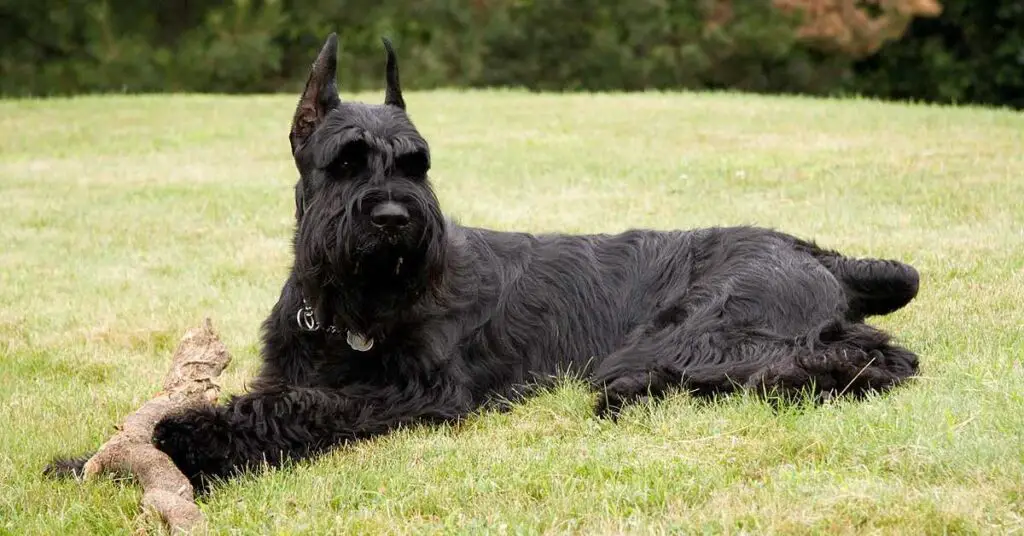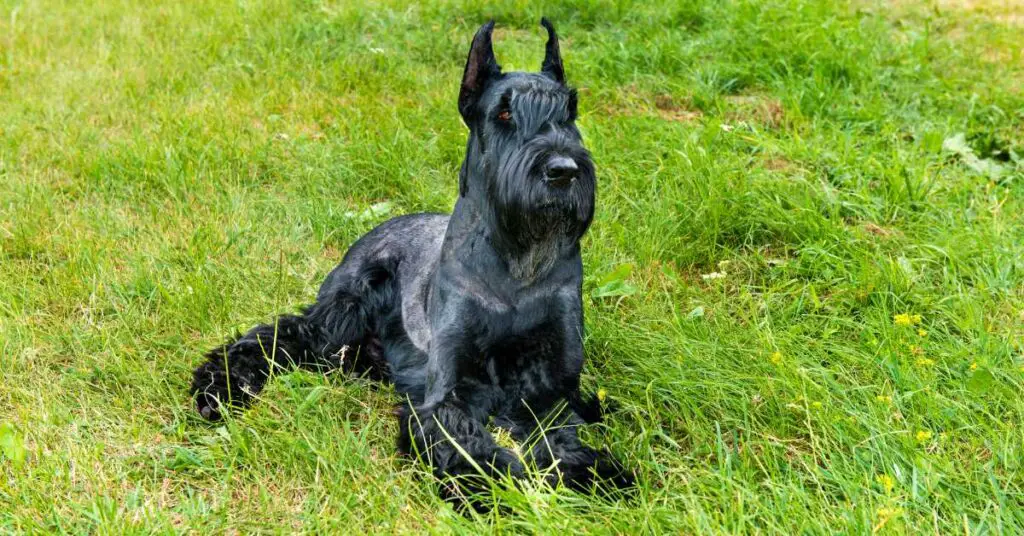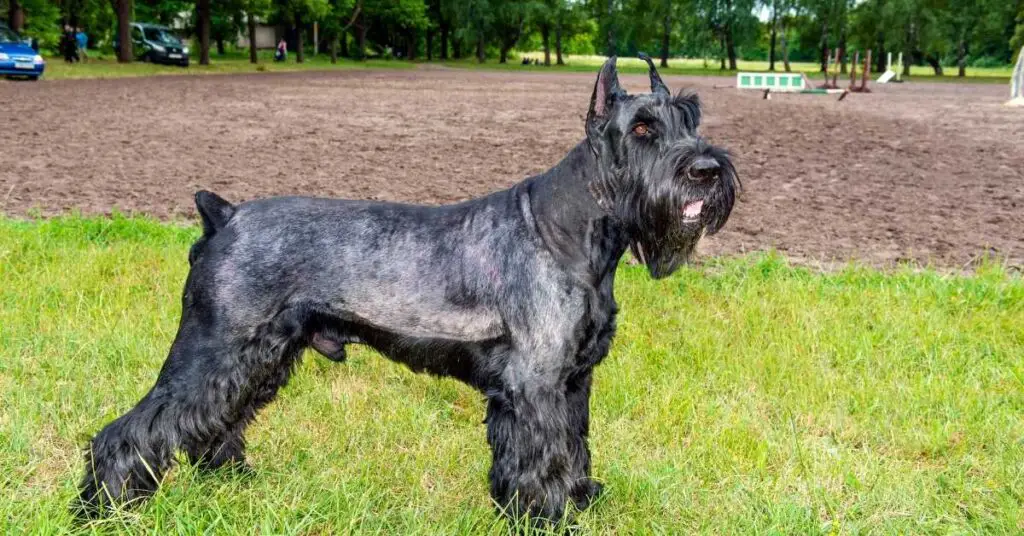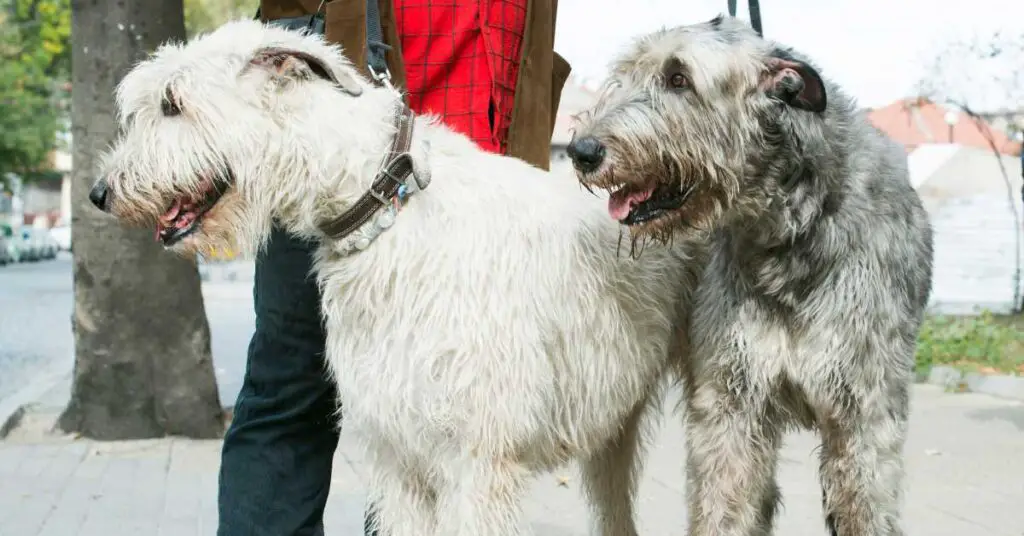Do you dream of a harmonious household where your giant schnauzer and cat can coexist peacefully? While the thought of these two furry friends living together may seem like a tall order, it is indeed possible to foster a loving relationship between them.
By understanding the temperament of giant schnauzers and following some essential guidelines, you can create a safe and comfortable environment where both pets can thrive. Early socialization and training play a crucial role in ensuring peaceful coexistence, while recognizing and addressing signs of aggression or discomfort is key to maintaining harmony.
In this article, we will explore common challenges faced by giant schnauzers and cats, real-life success stories, and factors to consider before bringing them into the same home. By providing you with evidence-based information and practical tips, we aim to help you make an informed decision and foster a sense of belonging for both your giant schnauzer and cat.
Key Takeaways
- Early socialization and training are crucial for harmonious coexistence.
- Supervision and positive reinforcement are important during initial interactions.
- Creating a safe and comfortable environment with routines and separate spaces is important.
- Gradual introductions and increasing interactions over time can help them become comfortable with each other.
Understanding the Temperament of Giant Schnauzers
Giant schnauzers are known for their spirited personality, which can make them both a playful companion and a formidable protector. When it comes to giant schnauzer behavior, understanding their temperament is key.
These dogs are intelligent and energetic, with a natural instinct to guard and protect their loved ones. However, every dog is unique, and individual temperament can vary.
Some giant schnauzers may have a strong prey drive, which could potentially pose a challenge when introducing them to cats. However, with proper socialization and training, many giant schnauzers can learn to coexist peacefully with feline friends.
It is important to supervise their interactions initially and provide positive reinforcement for calm behavior. Additionally, early exposure to cats and positive experiences can help foster a harmonious relationship between giant schnauzers and cats.

Introducing Giant Schnauzers to Cats: Tips and Guidelines
Unfortunately, when it comes to introducing your feline companion to a new four-legged friend, you might find that the process can be quite challenging. However, with early introductions and gradual socialization, you can increase the chances of your Giant Schnauzer and your cat getting along harmoniously.
The key to successful introductions is to start early. Ideally, it’s best to introduce your Giant Schnauzer to your cat when they’re both young. This allows them to grow up together and become accustomed to each other’s presence from an early age.
It’s important to take things slow and gradually increase their interactions. Start by keeping them separated but allowing them to sniff each other’s scents through a closed door. Then, you can try supervised visits where they can see each other from a safe distance. Positive reinforcement techniques, such as treats and praise, can be used to reward calm and friendly behavior.
Remember, every pet is different, and some may take longer to adjust than others. Patience, consistency, and positive reinforcement are key. With time and effort, your Giant Schnauzer and cat can learn to coexist peacefully.
Early Socialization and Training for Peaceful Coexistence
When introducing your furry friends, it’s important to focus on early socialization and training for a peaceful coexistence. Giant Schnauzers can get along with cats if they’re properly socialized from a young age. Here are three tips to help ensure a harmonious relationship between your Giant Schnauzer and your cat:
- Start early: Begin socializing your Giant Schnauzer with cats as early as possible. This will help them develop positive associations and reduce the likelihood of aggression or fear towards cats.
- Positive reinforcement: Use positive reinforcement techniques to reward your Giant Schnauzer for calm and friendly behavior around cats. Give treats or praise when they display appropriate interactions, such as sniffing or gentle play.
- Supervision and gradual introductions: Always supervise interactions between your Giant Schnauzer and cat, especially during the initial stages. Start with brief, controlled interactions and gradually increase the time they spend together. This will allow them to become more comfortable with each other over time.
Remember, early socialization and positive reinforcement are key to ensuring a peaceful coexistence between your Giant Schnauzer and cat.
Creating a Safe and Comfortable Environment for Both Pets
Creating a safe and cozy environment where both pets can feel at ease is crucial for fostering a harmonious bond between them. To achieve this, it’s important to create routines that help establish a sense of predictability for both the giant Schnauzer and the cat.
Having set meal times, play sessions, and designated resting areas can provide a structured environment that allows both pets to feel secure. Additionally, managing territorial behavior is essential. Providing separate spaces for each pet, such as separate feeding areas and litter boxes, can help prevent any potential conflicts over resources.
It’s also helpful to gradually introduce the pets to each other’s scents by swapping bedding or using pheromone diffusers. This can help reduce any anxiety or tension between them.
By creating an environment that promotes comfort and safety, you’re setting the stage for a positive and peaceful coexistence between your giant Schnauzer and your cat.
Recognizing and Addressing Signs of Aggression or Discomfort
To truly foster a peaceful coexistence, it’s important to promptly address any signs of aggression or discomfort between your schnauzer and feline friend. Signs of aggression can include growling, barking, lunging, or snapping. If you notice any of these behaviors, it’s crucial to intervene and redirect their attention.
Addressing discomfort is also essential. Keep an eye out for signs such as flattened ears, a tense body posture, or excessive licking. If your giant schnauzer or cat shows these signs, try to identify the source of their discomfort and remove it if possible.
Providing separate spaces for each pet can also help alleviate any tension. Remember, it’s important to address any signs of aggression or discomfort early on to ensure a harmonious relationship between your giant schnauzer and your cat.
Supervising Interactions and Gradual Introductions
Ensure a peaceful coexistence between your giant schnauzer and cat by supervising their interactions and gradually introducing them to each other. Start by setting up supervised interactions between your pets, where you’re present to monitor their behavior and intervene if necessary. This will allow you to observe their body language and ensure that they’re both comfortable and safe.
During these interactions, keep the sessions short and gradually increase their duration as they become more comfortable with each other.
When introducing your giant schnauzer and cat, it’s important to take a gradual approach. Begin by keeping them in separate rooms and allowing them to get accustomed to each other’s scent through closed doors. You can also swap bedding or place toys with each other’s scent to help them become familiar with one another.
Once they’re comfortable with each other’s scent, you can start supervised face-to-face introductions, keeping a close eye on their behavior and body language. Remember to always reward positive interactions and provide plenty of praise and treats to reinforce their good behavior.
By following these steps and taking the time to properly introduce and supervise their interactions, you can help foster a positive relationship between your giant schnauzer and cat.
Providing Separate Spaces and Resources for Each Pet
Setting up separate spaces and providing individual resources for your giant schnauzer and cat is like establishing different kingdoms within your home, where each pet has their own territory and possessions. This not only helps prevent any potential conflicts between them but also allows them to have their own safe and secure areas.
Here are three essential steps to create separate spaces and resources for your pets:
- Designate specific areas: Allocate different rooms or sections of your home for each pet. This provides them with their own personal space where they can retreat to whenever they need some alone time.
- Provide separate resources: Ensure that each pet has their own food and water bowls, litter boxes, and beds. This prevents any competition or territorial behavior that may arise from sharing these essential resources.
- Understand their temperaments: Consider the individual temperaments of your giant schnauzer and cat. Some cats may prefer elevated spaces, while dogs may need more outdoor access. Catering to their specific needs will help them feel more comfortable and content in their separate spaces.
By establishing separate spaces and providing individual resources, you’re creating a harmonious environment where both your giant schnauzer and cat can thrive.
Positive Reinforcement and Reward-Based Training Methods
Using positive reinforcement and reward-based training methods can foster a strong bond between your giant schnauzer and cat, promoting a harmonious coexistence.
These alternative training methods focus on rewarding desired behaviors rather than punishing unwanted ones, creating a positive and enjoyable learning experience for your pets.
Training challenges may arise when introducing a new pet to your household, especially when it involves different species like a giant schnauzer and a cat. However, by consistently using positive reinforcement techniques such as treats, praise, and play, you can teach your giant schnauzer and cat to associate good behavior with rewards.
This approach helps build trust, confidence, and a sense of security in both pets, making them more likely to get along and reducing the likelihood of conflicts.
Remember to be patient, consistent, and always provide a safe and calm environment for training sessions.
Seeking Professional Help or Guidance if Needed
If you’re struggling with introducing a new pet to your household, it might be beneficial to seek professional help or guidance. Managing inter pet dynamics can be challenging, especially when introducing a giant schnauzer to a cat. Here are four reasons why seeking professional advice can be helpful:
- Expertise: Professionals who specialize in animal behavior can provide valuable insights and guidance based on their knowledge and experience.
- Tailored approach: A professional can assess the specific needs and temperaments of your giant schnauzer and cat, and develop a customized plan to manage their interactions.
- Behavior modification techniques: Professionals can teach you effective techniques to modify your giant schnauzer’s behavior and help them coexist peacefully with your cat.
- Peace of mind: Seeking professional help can alleviate stress and anxiety for both you and your pets, ensuring a harmonious household.
Remember, every situation is unique, and seeking professional guidance can greatly increase the chances of a successful introduction and a positive relationship between your giant schnauzer and cat.
Common Challenges and Solutions for Giant Schnauzers and Cats
Facing the occasional feline-frustration, your giant schnauzer might need a little extra help to navigate the complexities of cat companionship. While giant schnauzers have the potential to get along with cats, there are some common challenges to be aware of.
One challenge is that giant schnauzers have a strong prey drive, which can make them chase after cats. To address this, it’s important to provide proper training and socialization from a young age.
Another challenge is that giant schnauzers are known for their protective nature, which can sometimes lead to territorial behavior towards cats. To promote peaceful coexistence, ensure that both the cat and the giant schnauzer have their own designated space and plenty of positive interactions together.
With patience, consistency, and professional guidance if needed, your giant schnauzer and cat can learn to live harmoniously together.
Real-Life Success Stories: Giant Schnauzers and Cats Living Together
Despite their natural instincts, many giant schnauzers and cats have formed successful and harmonious partnerships, proving that with proper training and socialization, these two species can coexist peacefully.
Real-life success stories abound, showcasing the potential for giant schnauzers and cats to live together in harmony. These heartwarming tales illustrate how patience, understanding, and gradual introductions can overcome any initial challenges.
By providing separate spaces, such as designated areas for the cat to retreat to, owners can alleviate potential risks and create a sense of safety for both pets. It’s crucial to supervise their interactions initially and reward positive behavior to reinforce a peaceful environment.
Additionally, gradually exposing the giant schnauzer to the cat’s scent and vice versa can help familiarize them with each other’s presence, reducing any potential tension. With proper training and a commitment to gradual integration, giant schnauzers and cats can form lasting bonds and enjoy a loving companionship.
Making an Informed Decision: Factors to Consider Before Bringing a Giant Schnauzer and Cat into the Same Home
Before bringing a giant schnauzer and cat into the same home, it’s important to consider several factors to ensure a smooth and successful integration. Here are four key factors to keep in mind:
- Early Socialization: Properly socializing your giant schnauzer and cat from a young age can significantly increase the chances of them getting along. Exposing them to each other gradually and positively can help them develop a bond and reduce potential conflicts.
- Professional Guidance: Seeking professional guidance from a trainer or behaviorist who specializes in integrating dogs and cats can be immensely beneficial. They can provide expert advice and techniques to facilitate a positive relationship between your giant schnauzer and cat.
- Individual Personalities: It’s important to consider the personalities of both your giant schnauzer and cat. Some dogs and cats may naturally have a more relaxed and tolerant nature, making it easier for them to get along. However, others may have a more assertive or territorial demeanor, requiring extra attention and training.
- Patience and Supervision: Integrating a giant schnauzer and cat takes time and patience. It’s essential to supervise their interactions initially and provide a safe environment for both pets. Gradually increasing their time together and rewarding positive behavior can lead to a harmonious coexistence.
Considering these factors and taking the necessary steps can help create a successful and peaceful integration between your giant schnauzer and cat.
Frequently Asked Questions
How do I introduce a Giant Schnauzer and a cat if they have never interacted before?
To introduce a giant schnauzer to a cat, follow these best practices. Prepare a safe and calm environment for their first meeting. Gradually introduce them, using positive reinforcement and supervision. Allow them to interact at their own pace.
What are some signs of aggression or discomfort I should look out for when introducing a Giant Schnauzer and a cat?
When introducing a giant schnauzer and a cat for the first time, watch for signs of aggression or discomfort. These may include growling, hissing, raised fur, stiff body language, and attempts to chase or attack.
Should I provide separate spaces and resources for my Giant Schnauzer and cat?
To ensure a harmonious environment, it’s important to provide separate spaces and resources for your giant schnauzer and cat. Gradual introductions will help them adjust and minimize potential conflicts.
What are some common challenges that may arise when bringing a Giant Schnauzer and a cat into the same home?
When bringing a giant schnauzer and a cat into the same home, common challenges may include territorial issues and the need for proper training methods. However, with patience and consistency, you can create a harmonious environment for both pets.
Are there any real-life success stories of Giant Schnauzers and cats living together peacefully?
Real life success stories show that giant schnauzers and cats can peacefully coexist with proper introduction. Tips for introducing them include gradual introductions, providing separate spaces, and using positive reinforcement.
Conclusion
In conclusion, introducing a giant schnauzer to a cat can be a successful endeavor with proper socialization, training, and creating a safe environment. While challenges may arise, seeking professional help and guidance can go a long way in ensuring a peaceful coexistence.
Remember the old adage, ‘slow and steady wins the race.’ Taking the time to understand the temperament of both pets and addressing any signs of aggression or discomfort will ultimately lead to a harmonious relationship between your giant schnauzer and cat.





